Blogs

It seems to me that, in order to create truly democratic and equitable classrooms, we need to first think about how to create classroom “communities”—something that, as Anna Lännström has noted previously, is especially hard to build right now. Communities that create space for all people and perspectives don’t just happen randomly or necessarily; they require a great deal of intention and attention. Rules, norms, guidelines, or whatever you want to call them can foster a democratic learning environment in which students feel like they can bring their full selves, ask questions, share misconceptions, try out new ideas, debate, create space for others, plan for action, and grow. I try to build community in lots of different ways in my classes, but an essential activity early on always involves the co-creation of a set of community norms that we all commit to upholding for the semester. As an initial homework assignment, to prime the community building, I have students fill out a “getting to know you” questionnaire I have fine-tuned over the years. One question, near the end, prompts students to fill in the blank: “As a learner, I do best when my peers….” Then, in class, I ask students to share what they wrote. (In-person, in the past, I would use an anonymous polling software like PollEverywhere. On Zoom, I just have students type into the chat box) As we review and discuss their responses, we all start to get a sense of what kind of support students would appreciate from each other. I then put students in groups (breakout rooms in Zoom) of about 3-5 and ask them to brainstorm answers to the following: What would it look like if we were to bring our “best selves” to class every day? What standards do we want to uphold? I tell students to keep in mind the responses they all shared to the “As a learner, I do best when my peers….” prompt. Each group types their ideas for norms directly into a shared Google Doc (no log-in required) and, once they are finished, we go through each proposed norm, one by one, making sure we all understand what it means, we all know how it would manifest, and we all can “live with it.” I usually lead this exercise on the second day of class; sometimes it flows into the third. We discuss for as long as it takes to reach agreement. Along the way, I actively encourage discussion and even dissent; right from the beginning, students know it is okay to critique and disagree. Generating community norms together not only starts the very process of building a democratic classroom community, but it also provides many “teachable moments.” For instance, students will often propose a norm like “respect each other.” But what the heck does this mean? I ask them to clarify: how do you understand this word, “respect,” and how do you know when someone is “respecting” you—or vice versa? A culture of politeness and “civility” reign at our institution, so I am particularly invested in ensuring that any expectations of “respect” don’t serve to stifle or silence. Many typical standards, like “respect,” are so vague or generic as to be useless and all too often end up centering the dominant groups or perspectives; this in-class activity allows us the space for this discussion. It also gives me a chance to suggest some norms of my own, since I’m a member of the classroom community too. I will usually propose some from AORTA’s Anti-Oppressive Facilitation Guide or “Respect Differences? Challenging the Common Guidelines in Social Justice Education,” such as “Strive for intellectual humility. Be willing to grapple with challenging ideas” and “Identify where your learning edge is and push it.” The community norms that the students and I co-create then stay with us over the course of the semester; this is not a “one and done” activity. We revisit them regularly. I project the norms at the beginning of different class periods. I give students a chance to review them and ask if we need to make any amendments. I check in every so often to find out how we think we are doing with the norms. The community norms guide all of our time together. (They also make it much, much easier to address any problems that might emerge in class, because I can simply refer back to the norms that we all agreed to.) At the end of every semester, in their final exams or their final course evaluations, students routinely remark on the “community” feel in my courses, with appreciative comments such as, “The class really seemed like a community, which made it easy to share and participate, and it was clear everyone liked the class and wanted to be there.” Without such a community in place, the difficult work of teaching for, about, and toward democracy would, I fear, be a non-starter.
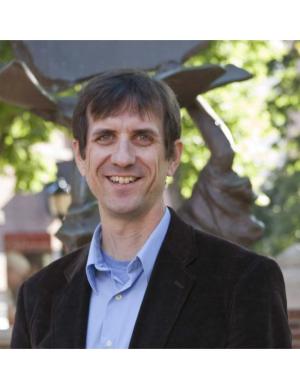
Twenty-five springs ago I sat in a class on African American literature. On a small, rural midwestern campus, this course was taught by a white professor. Two of the seven Black students on campus at that time were in the class, the remaining twenty-five or so students reflected the demographics of our predominantly white institution. One Monday we filed into class and learned that a fight had taken place over the weekend. The details were still emerging, but one of the seats in our classroom was empty. The one detail that had been confirmed: racist slurs were a precipitating factor for the physical violence. In this moment, the professor faced a choice: to continue apace with our scheduled reading of Beloved, A Gathering of Old Men, and other, now canonical works, hewing close to the text; or, to break the fourth wall and talk about what happened, call us to the uncomfortable acknowledgment that we could not confine our discussions of race to the characters in books that could be sold back to the bookstore when the course ended. Like most students, I suspect, I was largely unaware of all that went into that deceptively simple choice. This past week, as I prepared for a class discussion on Ibram X. Kendi’s How to Be an Anti-Racist and Fania Davis’s synthesis of racial justice and restorative justice, my class and all other classes were canceled by our administrators in a show of support for a student organized walk-out. The walk-out was a response to a blatant act of racist hate speech that targeted one student. Hundreds gathered on our main courtyard to listen to their peers speak their truths about being a person of color on our campus. For many students at our predominantly white institution this was, as they later acknowledged in class, the first time they had heard unfiltered, unmediated stories about the lived experience of blackness from people they actually knew (or thought they knew?). The night before the walk-out, I thought about my own professor’s choice twenty-five years ago. I had no doubt we would center the incident and the campus response in the coming weeks in our class discussions. And I have no doubt that my immediate clarity on this choice owes a debt to the professor who chose discomfort over distance, modeling the way in which good teaching demands recognition of the explicit and implicit ways the world consistently breaks into our classrooms. With so much political hand-wringing about conflating activism and academics and looking over the shoulder as some iterations of “cancel culture” paralyze our classroom discussions, tempting us towards pedagogical paths of least resistance and convenient half-truths, I am left to wonder if our classrooms can still serve as activating spaces, as spaces where the world doesn’t just break in, but where we prepare students to break out into the world. I want to believe that this is possible, realizable, and not just part of the trite, pedagogically elusive language of university mission statements and branding slogans. But I confess that one-on-one conversations with students after class this week—in a course intentionally focused on racial equity—have tempered my optimism about the classroom as an activating space. Or, perhaps it has once again reminded me of the perennial, now hyper-polarized and politicized, challenge of teaching: what activates one student often deactivates another. With its now ubiquitous undercurrent of subtweets and their offline consequences, is the classroom the right place for these conversations? For the moment—no, for the movement—my answer has to be yes. The impossible possibility of conversations about race in the classroom remains for me a pedagogical, even if paradoxical, imperative. Like Reinhold Niebuhr’s impossible possibility of the love ideal, conversations about race in the classroom confront us with what we know to be true and right in our assertions of basic human dignity, even as these conversations remind us of how often we fail to fully actualize the ideal by which we are guided. In recognition of that gap and our moral obligations as teachers to stand in it, I share, with no small amount of trepidation, the email I sent to my class the night before the walk-out, my own attempt at reclaiming the classroom as an activating space not in spite of, but in the midst of its impossibility. Message to Living in a Diverse World Class, March 2021 Hello Students, I had planned to address the hate incidents in our class discussion tomorrow. The tragic irony is not lost on me that our focus in this week’s reading is the intersection of racial justice and restorative justice as outlined in the chapter by Fania Davis. In the days and weeks ahead, I ask that you consider what is your role to play in supporting students directly and indirectly impacted by this incident as well as in addressing the elements of our campus culture that give rise to these types of incidents. The framework of restorative justice centers the needs of the victims even as it makes clear that harms caused by acts of hate and violence extend out into the community and, therefore, require both individual and community responses. We are all trying to sort out how it is that we have come to this moment in history when hate speech is too often conflated with freedom of expression. And, tragically, we are bearing witness on our campus and in our wider culture to the normalization of violence this conflation inevitably leads to. In this moment, I want to challenge us to move back into the uncomfortable space of talking directly about racism and anti-racism as they manifest offline in our very midst; it is, for me, one necessary way we must hold ourselves accountable. This is not about reducing these incidents to a “teachable moment.” This is about the distance we too often try to maintain between the classroom and the world. And how these incidents reveal this distance for the illusion that it is. The “world” breaks into our classroom, regularly. Our denial of this fact is, itself, a form of white, heteronormative privilege. In these moments, I think it is also imperative that we ask: can the classroom also break into the world? Can what we do together in class the remainder of this semester be responsive to, and a form of taking responsibility for, the injustices that shape individual students’ lives on our campus in radically disparate ways? At a minimum, I think we owe this to one another in our class, but more importantly, we owe this to those targeted by the hate and violence. In closing, I offer I drafted in response to national racial and religious hate incidents over the past couple of years, words I had hoped (perhaps naively) would never be needed as a response to incidents on our campus: Let us stand together committed to forming our lives in this community, daily, through practices of hospitality and not hate, in acts of compassion and not callousness, and as witnesses to the promise of peace and not the pathology of violence. While our various religious and spiritual traditions call us to imagine a world when this daily work is no longer necessary, they are not naïve to the world as it is. As wisdom from the Jewish tradition reminds us: “It is not your responsibility to finish the work, but neither are you free to refrain from it.”
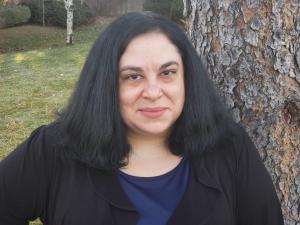
In 1887, British politician Lord Acton wrote the well-known phrase, “Power tends to corrupt, and absolute power corrupts absolutely.” Not as well-known is the context in which Lord Acton penned these words. They were written to the Archbishop of the Church of England, Mandell Creighton, who decried what he saw as overly harsh criticism of men in authority, namely, corrupt and abusive popes. In the same letter, Acton remarked, “I cannot accept your canon that we are to judge Pope and King unlike other men, with a favourable presumption that they did no wrong. If there is any presumption it is the other way against holders of power...there is no worse heresy than that the office sanctifies the holder of it.”[1] Christianity and power have long been intertwined in problematic ways, but does this mean that religious leaders and people of faith working for justice and peace should avoid power altogether? Is power inherently bad? In my Community Organizing course for theology students, our discussions interrogate these questions and contextualize them to current realities. Drawn from one of the class texts, our working definition of community organizing is “to mobilize disenfranchised people to advocate on their own behalf in relationship to some power structure in order to achieve needed changes.”[2] This important work necessitates the amassing of power, not for consolidation with the few but for distribution among the many, so that power relations are transformed and power itself becomes a shared entity. In other words, structures that have consolidated power such that individuals residing within them are “sanctified” by the nature of their office must be held to account by the collective power of those impacted by the sanctified’s actions. Ultimately, power is not inherently good or bad; but it has the potential to be either or both depending on who has it and how it is shared (or hoarded, as the case may be). Organizers—and ministry leaders—need to learn not only how to share power with others, but also how to help others recognize that they have power in the first place. In the COVID-19 era in which instruction has moved online, engaging in activities that help students practice power sharing requires creativity, patience, and a willingness to yield some of my own power as the instructor. The course is delivered asynchronously for the most part, but there are three seventy-five-minute synchronous Zoom sessions built into the design. I have utilized the majority of this time for the practice of key organizing activities designed to cultivate capacities for power sharing. In our first session, I facilitated a consensus decision making process whereby the students discussed in small groups, and then reported out to the whole class, their proposals and reasonings for how they would prefer to be grouped in responding to weekly discussion questions. (It is a large class, so there are many options for how they might be grouped for weekly assignments). Consensus was built around one option, and the group agreed to experiment with their decision until the next Zoom session when I would check in with everyone to see if any change was desired. At the next session, students also split into pairs and practiced relational meetings, a foundational tool in community organizing with a purpose of building shared power through identifying mutual interests. Through these activities, students cultivated awareness of their individual power, yet were challenged to forge connections with others to make shared decisions and listen for the purpose of understanding. These students, who will likely hold positional power as clergy or nonprofit directors, attained new understandings and praxes of creating collective power, moving beyond seeing power simply as a force to be cautiously kept behind a fence (as in a pastoral care conversation, for example) to embodying it as an active, dynamic energy that—with intentionality and humility—can transform individuals and dismantle unjust systems. By introducing students to such constructions and practices around power, and committing myself to practicing a pedagogy of power sharing in the virtual classroom (both as I’ve described and in other ways), alternatives to “absolute power corrupt[ing] absolutely” might instead form leaders who empower self and others relationally and collaboratively. There is no organizing—or leadership, for that matter—without community. Given what our country has witnessed over the past four years with a Trump presidency, such alternatives are needed now more than ever in religious and secular spheres alike so that democracy might be realized more full [1] Lord Acton, “Letter to Archbishop Mandell Creighton,” April 5, 1887, https://history.hanover.edu/courses/excerpts/165acton.html. [2] Loretta Pyles, Progressive Community Organizing: Reflective Practice in a Globalizing World, 2nd ed. (New York: Routledge, 2014), 10.

I have a feeling that this is going to be the crummiest semester of my teaching career. We’re tired here at my small undergraduate Catholic college outside of Boston. I’ve toggled back and forth between classes on Zoom and in person. As a result of all that, we’re now several weeks into the semester, and I saw some of my students’ faces for the first time yesterday. Well, the top half anyway. I’m sick of masks. The parts of the faces that I could see look tired. In fact, my students look about as exhausted as they usually do right before Thanksgiving. They tell me they are drained from the isolation, the uncertainty, and threat of going remote again. I am exhausted too. And we’re just halfway through a 15-week semester with no spring break (like many colleges, we canceled it to keep positivity rates down). All mental health numbers seem to go in the wrong direction. The college keeps sending out resources about support groups and numbers to call. I just got an email from my dean urging us to cut students’ workload this semester, to monitor their mental health, and to care for ourselves as well. At this point, my preference would be to cancel the rest of the semester so that we can all sleep until May but since that probably is not an option, I’m going to follow my dean’s advice. It’s triage time. Here’s my plan and survival guide: 1. Give the students more time to write their papers When the students in my gen ed classes have a paper due, they won’t have any reading assignments. Instead, they’ll submit three topic ideas on Monday, a shitty first draft on Wednesday, and the actual paper on Friday. We’ll use our class time on Monday and Wednesday as informal paper workshops. I won’t read the drafts at all; I’ll simply check that they submitted them. I’ll invite them to talk to me or visit the Writing Center if they want feedback. 2. Don’t teach any new materials In an optimistic moment in December, I included several new readings on the syllabus for my brand-new Catholic intellectual tradition course. They are good readings and they would improve the course. But I don’t know how to teach them. Honestly, I can’t even remember what they were about. So I’m going to skip them altogether and instead use materials I know well. I’ll accept that my Catholic intellectual tradition course will be light on Catholic readings this semester, and I’ll rely heavily on theology major Joe in the class to bring an informed Catholic perspective to our discussions. 3. Cancel classes In case you haven’t noticed, teaching and learning on Zoom is much harder and less effective than having class in person. Because of that, I’m going to avoid having class on Zoom whenever I can: If we get another snowstorm (did I mention I live in the Northeast?), I’ll just cancel class. I suspect we’ll get more learning done that way because it will give us a chance to rest and it will generate good will. Both will increase the chances of us having a good class when we’re back in the classroom the next day, so I’m trading two mediocre meetings for one good one. It’ll be worth it. If we must go remote again, I’ll cut back on class time for the students. We’ll all have class on Monday and then half will attend on Wednesdays and the rest on Fridays. I didn’t do this before because I couldn’t figure out how to have them use that extra hour without generating tons of extra work for myself (I’ve never had good luck with independent work for first year gen ed students). But now I have a plan. I’ll simply tell them to spend the extra time on the next homework assignment and choose not to feel guilty about it. 4. Stop obsessing about Zoom tuneout It’s harder to pay attention on Zoom, and we’ve all spent hours trying to figure out how to keep our students engaged. I’m done. I give up. I refuse to adopt my colleagues’ increasingly draconian suggestions. I don’t want to create a teaching environment filled with mistrust and even if I did, I don’t think it would work. The students are so tired that pushing them more won’t help. I’ll focus on those who are physically in the classroom and those on Zoom who are paying attention. I’ll remember that some of the students who keep their cameras off and refuse to talk really are listening. (I know that because I’ve seen their writing.) I’ll accept that some won’t pay attention. I’ll keep checking in on those who seem to disappear, referring them out as needed. Most of all, I’ll remember that it’s not personal. They are tuning out because they are exhausted and sick of Zoom, not because they want to disrespect me and my class. 5.Help the students cope Last week, a first-year student looked out at me from his Zoom box on my computer and asked, “Is it always going to be like this?” Suddenly, they were all paying attention, looking at me, intently. I put on my best confident professorial voice and said ‘no.’ I agreed that it feels like that now but I talked about vaccines and hope. But I also acknowledged that this semester will suck. And I promised that we’d muddle through it together. We will. Notes: I wish I had invented the phrase ‘shitty first draft’, but I got it from Anne Lamott. It’s from her essay “Shitty first drafts” in Bird by Bird – great essay! I did create the lazy staged assignment described above all by myself though.
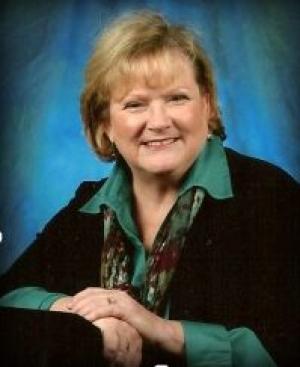
Vice president of the United States, Kamala Harris is known for wearing Chuck Taylor Converse sneakers and pearls that are emblematic of her historical significance as the first African American and South Asian woman to assume this high office. Girls and women everywhere donned the shoes and pearls to celebrate “Chucks and Pearls Day” on the day of her inauguration, January 20, 2021. Chucks and pearls have surplus meaning for VP Harris, and I would argue, for theological educators as well, and not just in the US context. I am an American teaching at a seminary in Canada where I find a strong investment of support for Harris’s achievements and optimism about what her leadership brings to the global stage. Is it sexist to focus on what women in leadership wear? One could look at it that way. The infatuation with Bernie Sanders’s mittens, however, might even the score. Conversely (pun intended), one could find inspiration in the “Twenty Pearls,” the esteemed early twentieth century founders of Harris’s historically Black sorority, Alpha Kappa Alpha Sorority, Inc. Biblically speaking, pearls are symbolic of wisdom gained through experience, and their value is juxtaposed against the swine of the world. Even after thirty years of teaching I seek confidence boosters to help me in the classroom, whether I literally or metaphorically “wear them.” Those ‘pearls of great price’ who came before me and braved male-dominated theological education, and my sister-colleagues who witness against sexism, racism, and classism, are confidence boosters for me. When there are confidence busters (like a vengeful comment on a course evaluation, or a double standard toward female faculty), the boosters offer examples of tenacity. When I feel I need to challenge a student on an unexamined idea, I muster the courage and grace to do so from the pearls in my life. If I feel spiritually or intellectually dried up, I go to the wisdom bearers of my tradition. The Converse sneakers were Harris’s go-to on the campaign trail. She was “laced up and ready to win” (“Why are Women Wearing Chucks and Pearls Today?”). Harris viewed the shoes as energizing and as telling a story about who she is as a well-grounded, everyday person. She saw them as a symbol of universality, an equalizing force, pointing toward the unity she seeks for the country. Harris has more than her share of detractors, but in her poise, one can see deep strength and steadfastness. The political arena, like the classroom--also political-- puts one in a vulnerable place. Confidence and agility are two invaluable personal resources in both spaces. And in this world of virtual and online teaching we especially need flexibility and an embodied, “real” presence. Teaching has a “ready to hit the ground” quality that requires quick movements and agility—dodging, shifting, and taking chances. Confidence comes with comfort in one’s body bringing a presence to the space. In the power dynamics of teaching and learning, confidence is not to be confused with cockiness or authoritarianism. It is the willingness to offer hospitality, to say under one’s breath, “Yes, I have a PhD which gives me knowledge and expertise in my field, but I still wear sneakers. I am a learner too.” Confidence is the readiness to be challenged by students in order to calibrate one’s own thinking. It also has the quality of standing firm when necessary. For example, sometimes students do not want to read something they disagree with or that causes a visceral reaction. I might persist with the assignment, knowing that it will hone our practice of discourse with those holding different views and allow us to explore what those reactions teach us. Such discourse is important in the democracy Harris defends. Does this mean that all theological educators ought to go out and buy Chucks and pearls to be in solidarity with our new VP? No. It isn’t about stuff, or that we need a good luck charm to help ward off evil or help us cope with the passing criticism. We do, however, need reminders that the pearls who have guided us are yet still with us and that we have within our souls (pun intended) the ability and agility to embody good teaching.
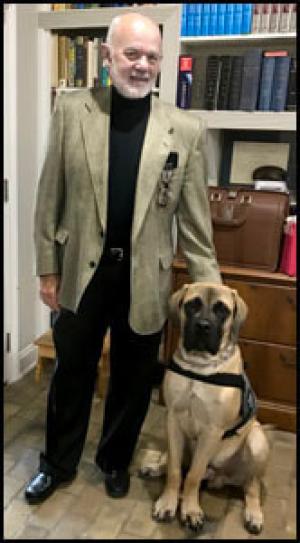
As the Jewish Studies Professor for my department, I teach an undergraduate course in the Holocaust (Sho’ah) every other school year. The remote format of the course now consists of weekly assigned readings and the edited version of class lectures gleaned from earlier years of in-class instruction. Students submit short weekly responses to the readings, including personal viewpoints and questions requiring additional information. The enrollees are a good Louisiana gumbo of Black, Brown, and White, male, female, and “other.” Two weeks ago, I received responses to essays on “The Medieval Treatment of the Jews” (book burnings, forced baptism, conversion sermons, blood libel, host desecration). Their responses largely expressed surprise that they had never been taught about these specific modes of mistreatment meted out to Jews in Europe. But there was one component that surprised and touched me personally. Although we had never discussed it, they seemed to sense how emotional Yom ha-Sho’ah (Holocaust Memorial Day, Jan 27) would be for me, and many expressed words of kindness and consolation. Their gesture moved me to respond with the following email of thanks. The national motto of Israel is lo’ ‘od, Hebrew for “Never again.” As Jews, we read and study a version of history that is not the same as the version other school children in America study. We don’t sing, “In 1492, Columbus sailed the ocean blue.” For us, the events of 1492 are singled out as a cause for mourning, a year during which we learned that not even conversion to the dominant Christianity of our world was enough to transform us into persons whose value is equal to that of our fellow citizens. It is understandable that the typical history curriculum in most of our schools does not focus on these matters of life and death to a tiny portion of the population. They are matters of no serious consequence to anyone other than the minority group of Jews. But if we watch in horror the slow and agonizing death of George Floyd or the senseless murder of Alton Sterling in our own beloved Baton Rouge, our responses can be either-or. Either we turn away and try not to think of what happens, or we vow to join the effort to create a world in which such evil can no longer be tolerated. In this struggle, the human capacity to empathize is essential. If the only persons who understand the pain of a class of people are those who themselves are in that category, hatred and pain never cease. Only the victims care, and their cries go unheard. Small, insignificant acts of meanness somehow morph into large and debilitating experiences. Over time, the world becomes darker and more frightening, for we have learned that we must fear each other. What is the answer? I cannot be other than who I am. But if I can only sense and react to treatment that is harmful to Jews, or old professors, then bad stuff done to “Others” floats by me right in front of my face—and I do nothing to combat it. This must not happen! Even at this later stage of my own life, I must daily renew my determination to expand my vision ever wider, to open my heart to the conditions of life that all people face, not just folks like me—old, white, male, Jews – all people. “To see” must also become “to perceive.” “To hear” must be “to understand.” I must be responsible not just for myself alone, but for everyone who is part of my human family. Here is a major part of my reason for entering into dialogue with people like you who are young, probably majority Christian, and cool. In other words, nothing at all like me. Yes, I need you to be “woke” about Judaism and our unfathomable experience during a truly awful period of history. But I also believe that it is incumbent on me to learn about all of you, to care about you as if you were my own family, because that is exactly what you are. Indeed, if Judaism teaches only one lesson, it is that we are all from the same father and mother and thus a single family destined either to live and care for each other or, God forbid, to hate and destroy each other. I choose life and caring, and I ask all of you to join me. Ken yehi ratzon. “May it be God’s will.”

During the past year, two of my favorite Brazilian writers and educators, Luiz Antonio Simas and Luiz Rufino collaborated on yet another book: Encantamento: Sobre a Política da Vida (Incantation: On the Politics of Life). One of the central affirmations of their work (which follows their previous co-authored publications: A Pedagogy of the Crossroads, An Arrow Through Time, and The Enchanted Science of Macumbas) is that the opposite of life isn’t death—it is desencantamento, or an inability to surrender to a process of incantation. As a verb, incantare evokes our capacity to fuse song and word in an effort to raise our spirits, to spark magic in our imaginations, to invite divine presence. Our capacity to incantate spaces of learning does precisely what theologian Rubem Alves invites us to do: name and invoke the not-yet worlds, so as to break the spells of right-here worlds that continue to abandon, oppress, exclude, and sever from ourselves and our communities of belonging. Incantation as a poetic of resistance allows us to escape, disobey, and ambush the traps set through the colonial matrix of power so that bodies can dare to see, create, invent, and integrate new possibilities freedom, belonging, and liberation through creativity and imagination. Incantation, Simas and Rufino affirm, nests our capacity to move through time, to experience a passage between forms and worlds, to change our points of reference through a politic of life that is rooted in an imprinting of the everyday as rites of reading and writing different poetic routes capable of setting traps to our collective loss of hope and vivacity.[i] In this sense, incantation is an exercise in emergence and survivance that lives and breathes beyond the terrorizing effects of coloniality. It’s the commitment to movement, occupation, visibility, insertion, and participation. It’s the creative force that travels through crossroads of knowledge-making, confronting hierarchizations produced by ontological, epistemological, and semiotic violences. Art, as I understand it, has a tremendous power to forge incantatory pathways of resistance because of its capacity to dis-educate us from disciplinary molding. It reverberates and discloses to us that which is hidden in our interior recesses in embodied, striking, and visceral ways. It can help us re-educate our affections, as Paulo Freire puts it, or work a kind of magic in our souls, as bell hooks states. It also inspires us to name the world as we see it, and to find a poetic tongue when the language we know fails us. It helps us resist, heal, connect, conjure, and tend to all our relations. As generative clearings, the arts are sites for world-making, for dreaming, rehearsing, and choreographing new possibilities of being and intervening in the world. When we immerse ourselves in acts of artmaking, we have the opportunity to access the visceral, the somatic life of the body, its reflexes, limits, intuition, responses, desires, needs, and its alchemies. When we encourage and invite students to in-corporate artmaking processes as they engage readings, discussions, and bodies of knowledge, we participate in this politic of incantation. A student’s performance and ritual entitled “Disposable Beauty” still stands as one of the most profound and generative projects to which I have been witness. As a final integrative assignment, the performance consisted of placing delicate flower arrangements throughout locations in her neighborhood that were marked by abuse, violence, and abandonment. Such poetic gestures in vulnerable spaces in the city sought to raise awareness of our transience, interdependence, and negligence in the face of injustice. The flower assemblages were made out of blossoms and foliage that flower shops would throw away at the end of the day. This poetic gesture both incantated and resisted the (i)logic of degradation, disposability, oppression, and inequity by orienting herself and participants in acts of creative wonder. Through her invocation of not-yet worlds, she extended a gesture of care, of regard, of re-worlding, refusing to be desencantada with the world around her. At the end of these performances, she invited folks to partake in tea ceremonies that were rooted in offering the gift of reciprocity, spiritual care, regard, and a warm cup of tea. As a poetic of incantation, her artistic gestures imbued spaces of desolation, disposability, and abandonment with love, presence, and beauty through a practice that integrated the semester’s resources, readings, discussions and questions with her own wisdom, creativity, and spiritual sensibilities. I return to this experience often to remind myself to continuously ask how many of the assignments outlined in my syllabi impede or foster poetic and incantatory experimentations. Notes [i] See Luiz Antonio Simas and Luiz Rufino, Encantamento: Sobre Política de Vida (Rio de Janeiro, RJ: Morula Editorial, 2020). Photo Credit: Miguel Garcia Saaved - stock.Adobe.com
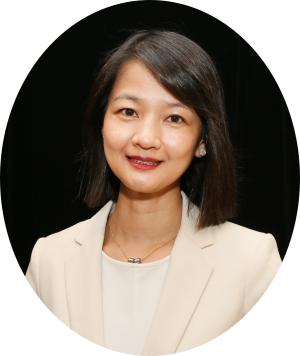
I am familiar with what liminality means, but I have never put the Israelite’s journey in the wilderness and liminality together until recently. Liminality was first used in the discipline of anthropology and then applied to ritual and other areas of research. It is a term to describe being in between, being in the threshold, where a person is in transitional stage, not belonging to the past or future. I have used the term to describe the biblical Job during his suffering. Liminality is a time of confusion, vulnerability, uncertainty, and even danger. But then it also reflects a time of possibility, potential, and becoming. For example, when a person passes from singlehood to a married status, that person can no longer return to the old single self, but has been transformed into a new sense of self with someone else to live and care for. Similarly, when one is between jobs, that person is also in the liminal stage. In a way, all schools are going through this liminality during the COVID-19 crisis. Being in a pandemic is being in liminality, with all the confusion, vulnerability, and uncertainty that go along with it, not to mention danger. Being in transition is not comfortable. Belonging nowhere is painful. Having a confused status is never fun. Yet, being in COVID-19 is also a time of profound possibility, potential, and becoming. The world will not be the same after COVID-19. Many professions and fields will forever be changed in the post-COVID-19 world, and education is among them. In the future, online education and programs will be a necessity rather than an option or a suggestion. Remote learning will be the norm. The idea of expecting people to come to one’s campus physically for education will soon be in the distant past, if that is not a reality already. During the podcast conversation I had with Dr. Lynne Westfield in early February 2021, she asked me about the future of my school: “Is it bright?” I responded: “The future is online but everything else is uncertain.” Indeed, with COVID-19, all schools are not just in the same boat, but in the same storm, as Westfield rightly remarked. Living in liminality can be frustrating, but we can choose to see the transforming potential it has for all of us if we discern attentively what God is doing at this moment of history as administrators, faculty, and students in our particular contexts of formation. If we try to see beyond the chaotic present into the future, perhaps we can see ourselves living in a prophetic time, a critical time for reflection on things that matter. After leaving Sinai for the Promised Land, the Israelites were stranded in the wilderness for forty years. It was during that crucial time through trials, suffering, rebelliousness, and dependence, that the Israelites became the people of God. It was also during that difficult time, that the presence of God was with them (Ex 40:38). Being in liminality can be meaningful and hopeful.
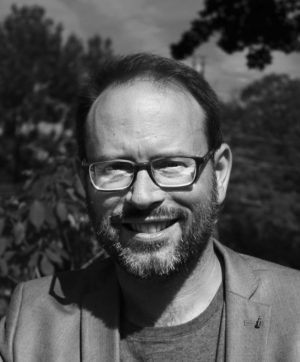
Delvyn Case · Ruach (Revised Version) The Hebrew word Ruach means both “breath” and “spirit.” Fundamental to this word (and to the Greek analogue, pneuma, which also is used in both ways) is a paradox. The notion of “spirit” denotes something ineffable and invisible - yet something that is always ready to break through and make itself known in a transformative way. Catholic mystics, African griots, and Christian Pentecostals are well-known examples of religious people who - when filled with the “spirit” – sing, dance, pray, feel, or see things that are amazing, powerful, and even out of their control. In the same way, “breath” is something simultaneously ineffable and invisible – yet also so fundamentally physical that our bodies do it without our conscious thought. We usually only become aware of our breathing when we experience something surprising or particularly important: when something beautiful makes us catch our breath, our something frightening makes us cry out in terror. In the same way, we are not usually aware of our “spirit” except in special circumstances: in a religious or spiritual state, for example, or when we have to call upon something deep within us in order to create – or to endure. This piece, Ruach, confronts this paradox by bringing to our awareness many different ways “breath” and “spirit” can become sonically and dramatic present. Throughout the piece the performers are asked to make various kinds of breath sounds with their instruments and their own voices, blurring the line between music and sound. Overall, the piece emphasizes idea of the spirit as a powerful force that is surprising, shocking, and fundamentally resistant to control.
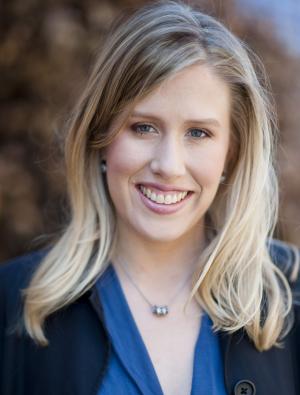
Sex, money, politics: all the things we are told not to talk about. However, as the ethics professor at an Episcopal/Anglican seminary which draws diverse students from across the theological spectrum, teaching on these controversial issues is an important and challenging part of my job. As a professor, it’s easy for me to believe that my responsibility in teaching on controversial issues extends only to giving a compelling lecture or leading an animated discussion. However, unless controversial issues are presented in a context in which the students and I are open to learning and changing, there is always a risk that the class simply confirms the students who already agreed with me in their convictions and alienates the students who disagree, making their future openness to change even less likely. Rather, true transformational pedagogy requires not just teaching concepts, but incorporation into a community which creates the conditions for transformation. In February of 1940, Dorothy Day considered the transformation required in order for the members of the Catholic Worker to confront the difficulties of working for “a new heaven and a new earth, wherein justice dwelleth.” Day described how this work depends on God’s grace, but also demands radical change on the part of the human participants. In fact, it requires “indoctrination”—bringing people into the doctrine of the “mystical body of Christ.” Indoctrination is not simply the reception of information, but actual incorporation—becoming one body—with the community. Incorporation requires formation, which is achieved in part through shared practices such as worship (daily attendance at Mass and communal rosaries), community (carried out in kitchens and at the table), and external engagement (political activism and care of the poor). In the rest of this post, I will consider how these same practices are key for developing a community in which transformative pedagogy regarding controversial issues is possible. First, Day examines how the practice of worship highlights the “correlation” between the spiritual and the material while also emphasizing the primacy of the spiritual. Looking beyond the physical to the spiritual expands the imagination by “quicken[ing] the perceptions” to appreciate other material and spiritual experiences than one’s own. Creating fertile ground for engagement with controversial issues in the classroom requires exactly this type of transformation of the imagination. In addition, worship teaches patience and charity. Confronting our own limitations in contrast to God’s goodness should ensure that “we will not lose faith in those around us, no matter how stumbling their progress is.” In Christian seminaries in a liturgical tradition such as my own, communal practices of worship provide the perfect opportunity to encourage students to look beyond their material circumstances to seek “the presence of God” in their analysis of controversial issues. However, any pedagogical practices which move students beyond the classroom into a mode of reflective engagement—with the beauty of art or nature especially—can also prove valuable resources in a nonreligious or interfaith setting for transformation of imagination and expansion of perspective. Day’s description of the communal practices of kitchen and table point to the context which prepares people to engage with controversial questions. In the time of COVID, we have come to realize how important eating together is to create the bond and trust required for vulnerability. In addition, the cooperation of cooking together or other shared creative activities strengthen and reinforce a communal bond. Creating space for students to engage in these types of activities, whether as a whole class or in small groups, creates the conditions for true openness regarding challenging issues. Through these communal practices, students and professors begin to experience the reality of their identity as a communal body. Like a body, students incorporated in the community will start to feel the hurts and joys of one another as their own—preparing them to approach controversial questions which impact the lives of others with new empathy and urgency. Finally, Day describes the practices of service and activism which are the outgrowth of communal and spiritual practices. These actions, especially those which engage the community in service with the poor, build on the first two categories, as well as providing the end which guides them. Of course, these practices are more easily obtained in service-learning programs. However, even taking advantage of opportunities to genuinely serve others in the community can enhance solidarity within the community while also expanding the participants’ awareness of the sorrows and challenges of the world. Through shared engagement in these practices, students and professor gain a deeper understanding of the impact of controversial questions on people’s lives, confront the limited nature of solutions currently available, and come to appreciate the need not only for knowledge, but action. Will all these practices make teaching controversial issues easier? Not necessarily. In fact, they may complicate emotional engagement and can add to the administrative burden. In addition, they require the professor to surrender pedagogical illusions of grandeur or omniscience. However, as Day reminds us, “little works” matter, and through these small practices both we and our students may change and ultimately grow.
Categories
Write for us
We invite friends and colleagues of the Wabash Center from across North America to contribute periodic blog posts for one of our several blog series.
Contact:
Donald Quist
quistd@wabash.edu
Educational Design Manager, Wabash Center
Most Popular

Are You Okay?
Posted by Nancy Lynne Westfield, Ph.D. on October 1, 2025

On Plagiarism and Feeling Betrayed
Posted by Katherine Turpin on October 27, 2025

Embracing the Imposter Within
Posted by Fred Glennon on September 15, 2025

A Teachable Moment Missed?
Posted by Fred Glennon on October 20, 2025

Analog Versions of Digital Classrooms
Posted by Samantha Miller on October 8, 2025